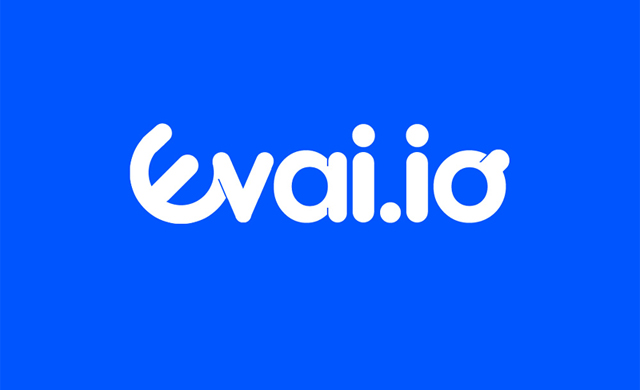For decentralized finance (DeFi) to attain its objective of disrupting the financial sector, it requires a decentralized project rating solution. This is what Evai.io is targeting to achieve. Furthermore, the recent decline in the DeFi ecosystem is evident that now investors need an unbiased and decentralized rating protocol to back the most coveted projects and minimize the potential losses.

The DeFi sector has been described as the blockchain killer due to the high number of inactive projects without potential. However, as with any other developing sector, DeFi has both winners and losers. As such, a robust decentralized crypto rating system is essential to keep the promising sector from falling. Without an impartial tool, the industry is condemned to fail, such as the incompetent financial divisions ahead of it.
Notably, decentralized finance is the cryptocurrency industry’s response to lending, borrowing, insurance, and many other services found in the traditional financial sector. However, in contrast to the centralized financial system, DeFi is decentralized and impartial. In other words, there is no central authority, such as a government or central bank manning the flow of resources or data in the sector. This curtails expenses and risks involved with third parties and also eliminates incompetence.
Decentralized finance development distress
DeFi has been in existence for less than three years but has seen an immense increase in value over that short period. The total value locked (TVL) in DeFi protocols has increased from just $4 to $12.45 billion (at the time of writing) in only over two years, according to DeFi Pulse data.
Simply put, investors saw the immense potential the DeFi sector holds and decided to gamble more than $10 billion regardless of its short existence. Even more staggering is that more than $11 billion of the TVL in various DeFi protocols such as lending, insurance, and other investment opportunities has been enclosed during 2020 alone.
DeFi’s spectacular growth has been chiefly catalyzed by “Yield Farming,” a liquidity mining tokenomic which involves users providing such lending and borrowing protocols with liquidity. In return, the users are rewarded with governance tokens of the respective platform. This motivates investors to lock in more liquidity, driving the value of some governance tokens to unimaginable levels.
A striking instance of this is the yEarn Finance protocol. The platform’s YFI governance tokens, which are awarded to the liquidity providers, have surged by over 40,000 percent since launching back in July. The token rose from $34 to a record of $15,800 in just one month, according to Coingecko. YFI rose to all that value regardless of Yearn Finance’s founder, Andre Cronje, negative sentiment that YFI is “completely valueless 0 supply token.”
Nonetheless, some other DeFi projects have popped up in thousands aiming to take advantage of the DeFi sector, especially yield farming. For instance, the Yam token, which, despite publicly confessing to be completely unaudited, saw investors flock in thousands to drive millions into the project. Yam describes itself as a “minimally viable monetary experiment.”
Yam token market cap rose from 0 to $60 million within 48 hours. However, two days later, investors withdrew their cash after uncovering a bug in the protocol. All the market cap disappeared a little while after that, together with users’ capital invested. Such questionable projects are hampering DeFi growth on top of the thousands of fake tokens in circulation.
Regardless of the setbacks, DeFi is not hopeless after all. The sector has not accumulated an $8 trillion market capitalization from just speculations. However, it’s undeniable that the entire DeFi ecosystem is in great need of a comprehensive audit, just like any other project.
Evai.io Defi auditing
Regardless of all the sad instances and tales in decentralized finance still, many people reckon decentralized finance will disrupt the financial sector entirely in the future. Many other cryptocurrency rating platforms already exist.These platforms claim to audit DeFi and other crypto projects justly and unbiased. However, humans will always be humans and biased regardless of their intent. For instance, the great recession of 2008 was brought about by biased credit rating agencies.
The development of the Evai crypto rating platform was inspired by the great recession of 2008. The limited investor knowledge, dishonesty, and over-dependence on a biased and rating structure resulted in the market crash of 2008. Evai’s primary goal is to embed authenticity in the cryptocurrency industry. Evai eradicates selective perception and inclination by adopting a six-factor rating model. This model is called “The Bridge.”
The bridge evaluates crypto assets based on various standards, such as their leaning towards systemic risk, liquidity, expected profitability, rate of change in asset price, aggregate demand, and investment. Assessing all this determines the ideal revelation of a given digital asset.
Furthermore, Evai’s bridge uses AI and machine learning technology to ensure an ideal investment opportunity and decides the amount to be invested in a particular project. Moreover, the crypto rating platform has its ERC-20 token, Evai token, which it uses to reward holders for contributing ideas and market knowledge on the broadening Evai ecosystem.
Switching from centralization is vital to realize an effective rating solution. To achieve this objective, Evai exists as a completely self-sufficient rating solution and does not receive any financial backing or charge fees on the rated projects. As DeFi endeavors to disrupt the financial sector entirely, the industry is in dire need of an unbiased, trustworthy, and dependable decentralized rating system to separate dubious projects from ideal investment opportunities.
Conclusion
Blockchain technology proliferation is expanding rapidly across the world. The applications of this revolutionary tech are yet to be exhausted as it is still developing. Without a doubt, Wanchain is among the most exciting smart contract blockchains to come out of Asia lately. Its main objective is to build a financial market of digital assets by facilitating cross-chain transfers from one blockchain to another.







